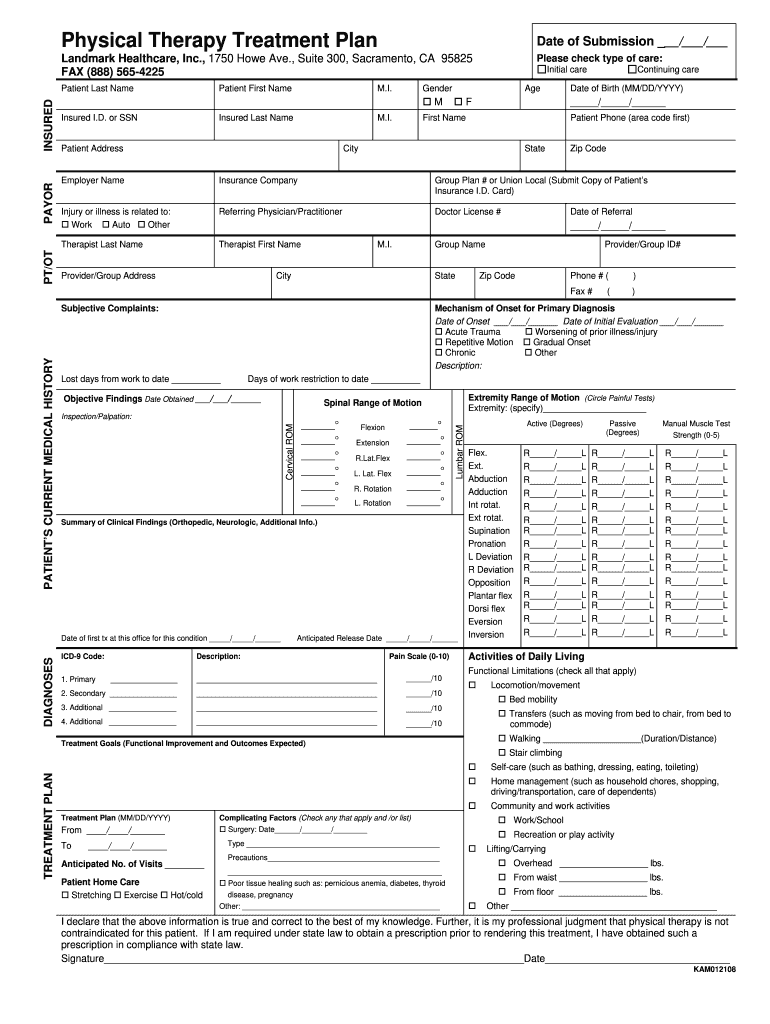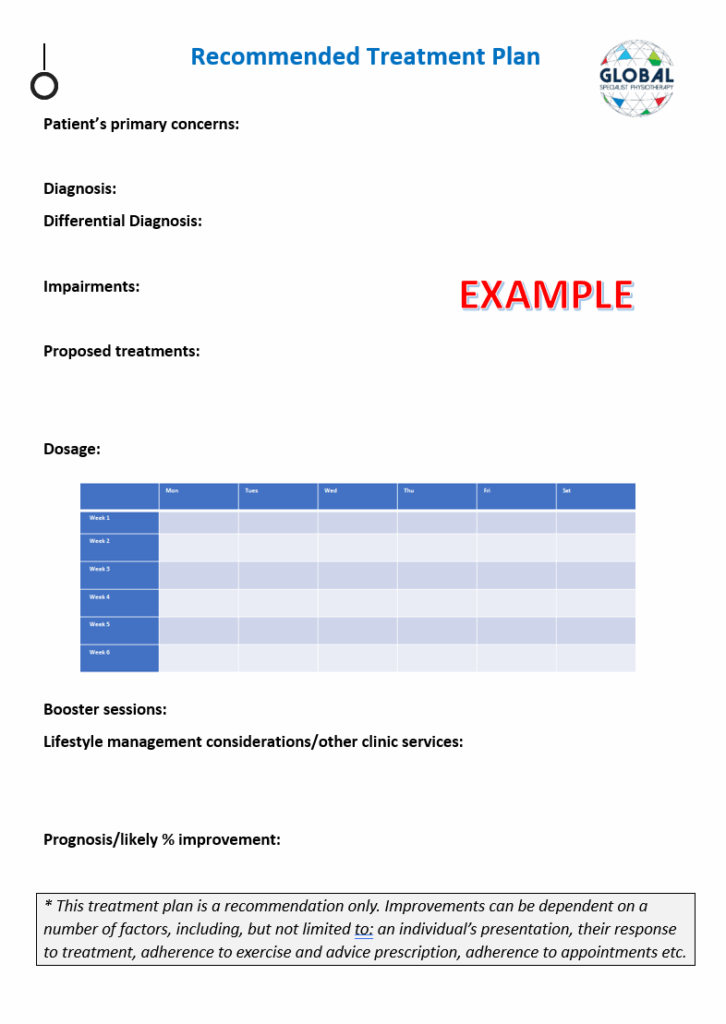A physiotherapy treatment plan form is a document that outlines the specific goals, strategies, and exercises that a physiotherapist will use to help a patient recover from an injury or condition. This form is typically created after an initial assessment and serves as a roadmap for the patient’s rehabilitation journey.
The treatment plan form may include details such as the patient’s medical history, current symptoms, short-term and long-term goals, proposed treatment techniques, frequency of sessions, and progress tracking methods. It is a crucial tool for both the physiotherapist and the patient to ensure that the treatment is tailored to the individual’s needs and progresses effectively.
Physiotherapy Treatment Plan Form
Key Components of a Physiotherapy Treatment Plan Form
When creating a physiotherapy treatment plan form, several key components should be included to ensure its effectiveness:
1. Patient Information: This section includes the patient’s name, age, contact details, and relevant medical history.
2. Treatment Goals: Clearly defined short-term and long-term goals that the patient and physiotherapist aim to achieve during the rehabilitation process.
3. Treatment Techniques: Detailed description of the exercises, manual therapies, and modalities that will be used during the treatment sessions.
4. Progress Tracking: Methods for monitoring and evaluating the patient’s progress, such as range of motion measurements, pain levels, and functional assessments.
5. Home Exercise Program: Instructions for exercises and activities that the patient should perform at home to complement the in-clinic treatment.
Benefits of Using a Physiotherapy Treatment Plan Form
There are several benefits to using a physiotherapy treatment plan form for both the physiotherapist and the patient:
1. Personalized Care: The treatment plan is tailored to the individual needs and goals of the patient, ensuring a more effective rehabilitation process.
2. Goal Setting: Clear goals and objectives help motivate the patient and provide a roadmap for tracking progress throughout the treatment.
3. Communication: The treatment plan form serves as a communication tool between the physiotherapist and the patient, ensuring that both parties are on the same page regarding the treatment plan.
4. Accountability: By documenting the treatment plan and progress, both the physiotherapist and the patient can track outcomes and make adjustments as needed to achieve optimal results.

